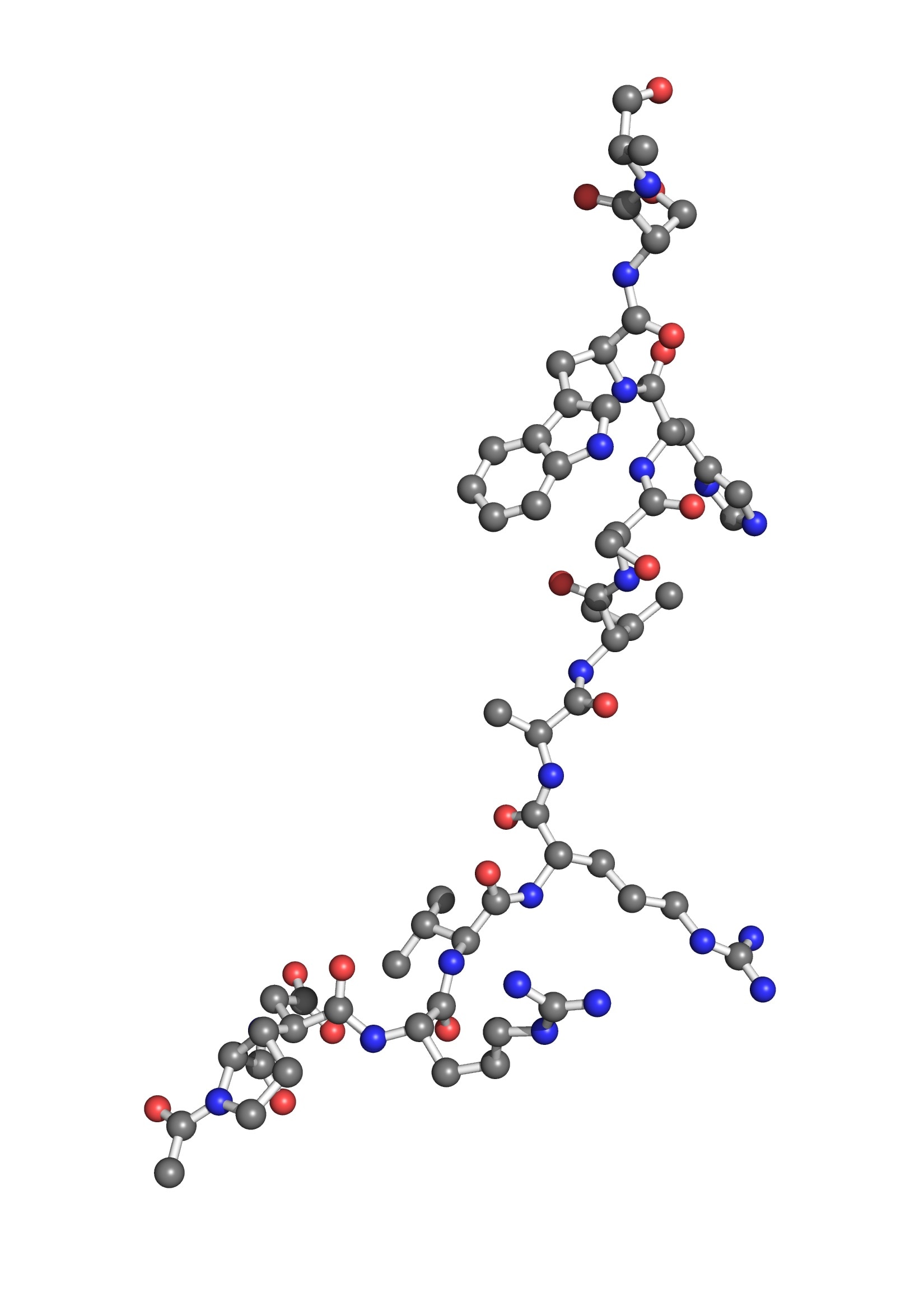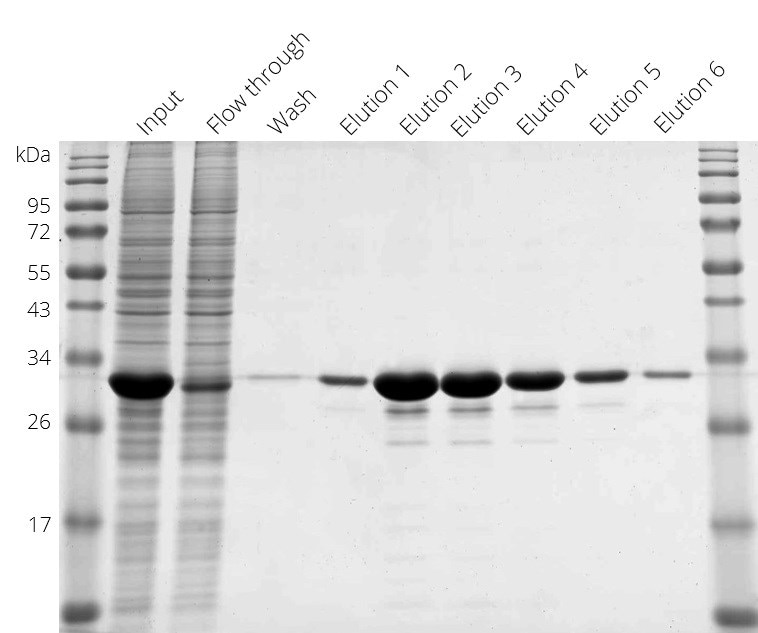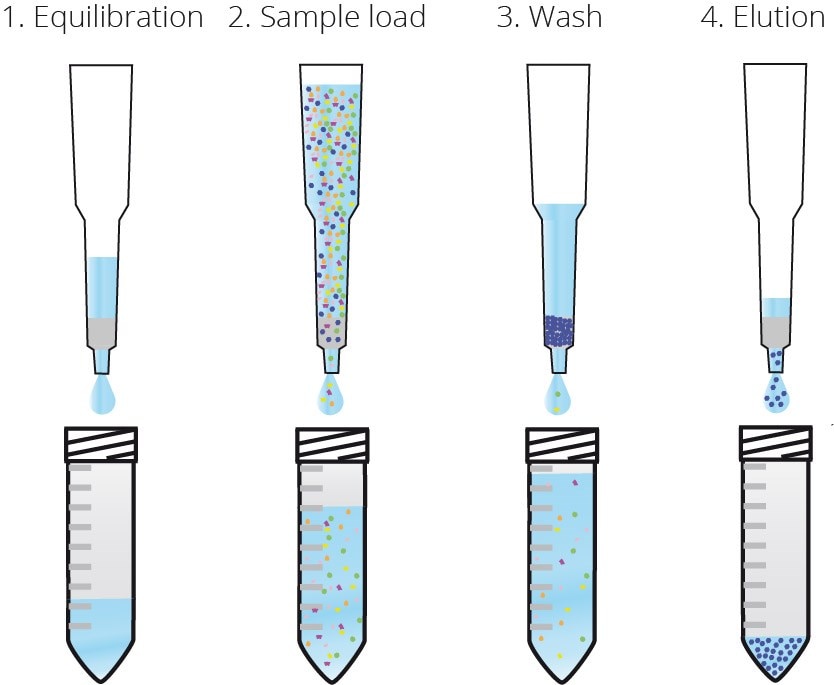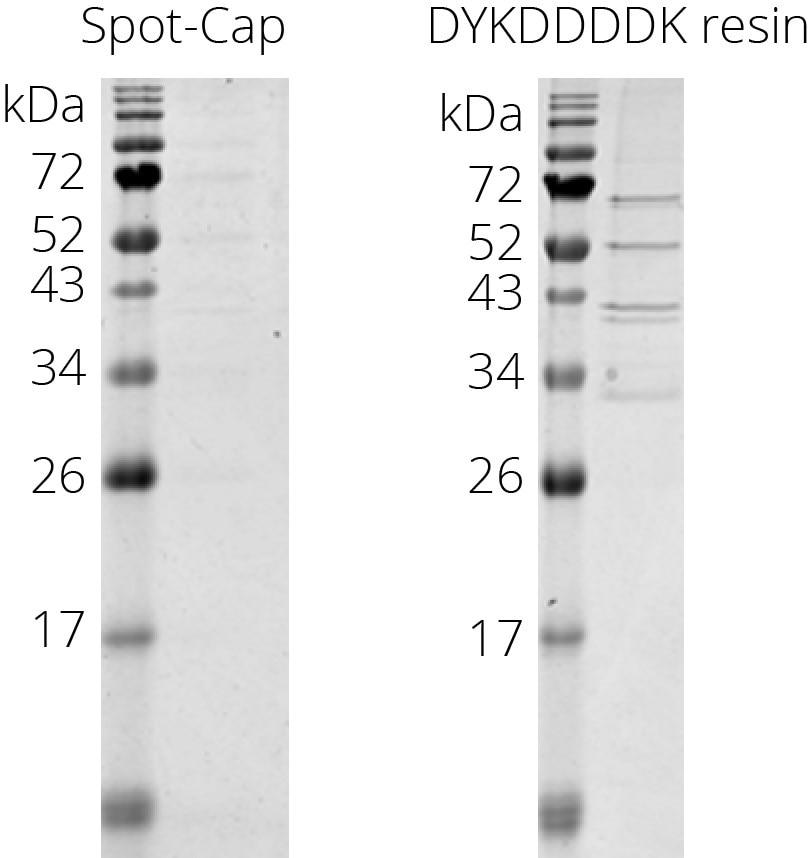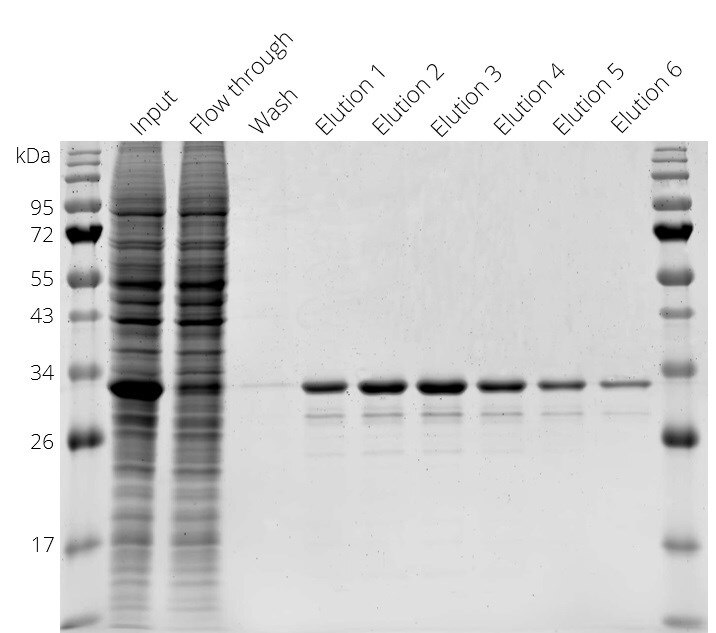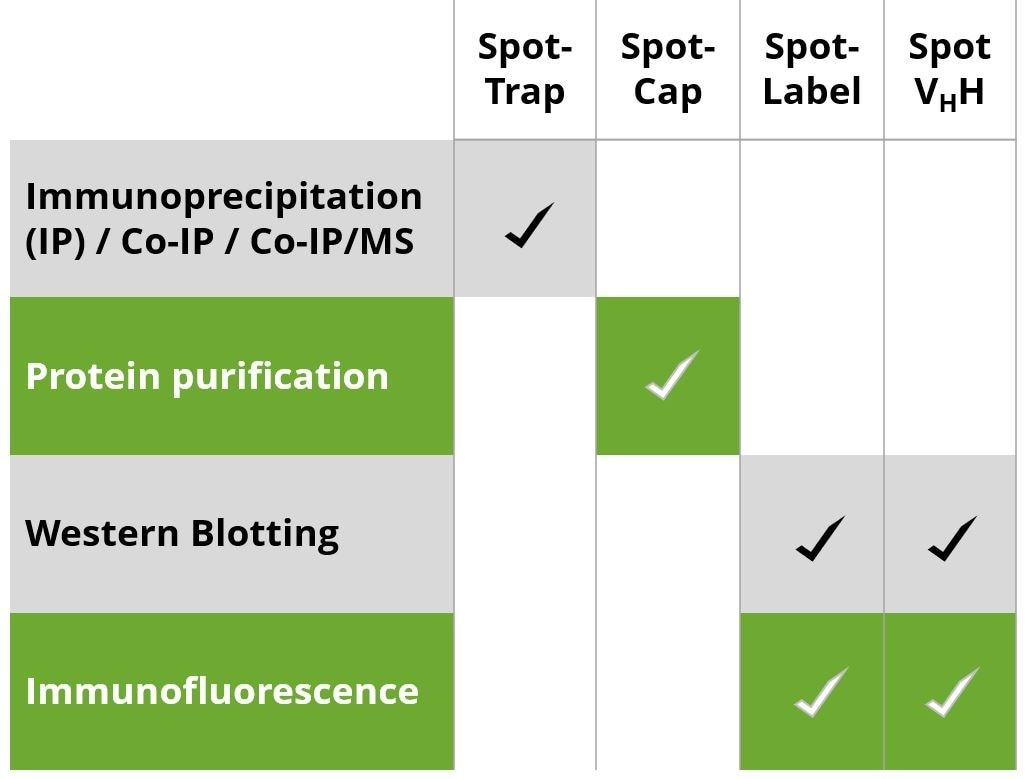Validation Data Gallery
Product Information
Spot-peptide
| Applications | Elution of Spot-tagged fusion proteins bound to Spot-Cap |
| Sequence | Peptide of amino acid sequence PDRVRAVSHWSS |
| Form | Lyophilized powder |
| Conjugate | Unconjugated |
| Molecular weight | 1,397 g/mol |
| Purity | >96% (HPLC) |
| Reconstitution | Dissolve Spot-peptide in PBS (1 mg Spot-peptide in 140 µL PBS, 10 mg Spot-Peptide in 1.4 mL PBS) to a final concentration of 5 mM (7 mg/mL). Aliquot upon reconstitution. |
| Dilution | Dilute Spot-peptide to 0.1 mM in PBS for elution of Spot-tagged proteins from Spot-Cap. |
| Storage Condition | Upon receipt store at -20°C/-4°F. Aliquot upon reconstitution and store at -20°C/-4°F. Avoid repeated freeze / thaw cycles. |
| Shipment | Shipped at ambient temperature. Upon receipt store at -20°C. Aliquot upon reconstitution and store at -20°C. Avoid repeated freeze / thaw cycles. |
| Spot-Tag® Origin | Engineered 12 amino acid sequence modified from the unstructured N-terminus of beta-catenin |
| Cross Reactivity | The Spot-Nanobody shows minimal cross reactivity with beta-catenin. |
Publications
| Application | Title |
|---|---|
Cells Cep192, a Novel Missing Link between the Centrosomal Core and Corona in Dictyostelium Amoebae. |

